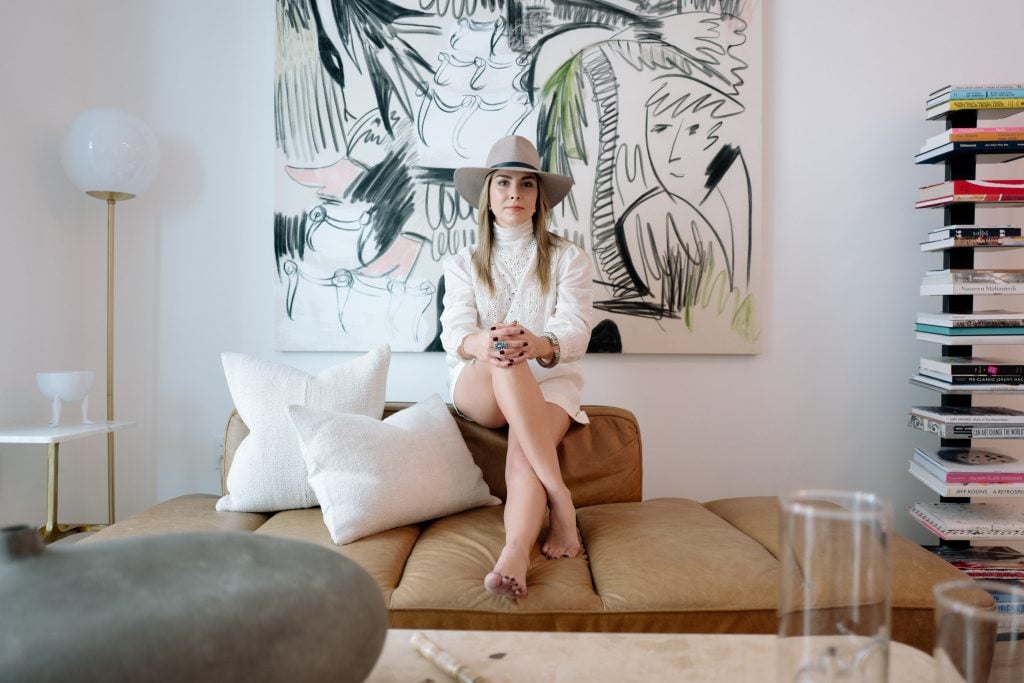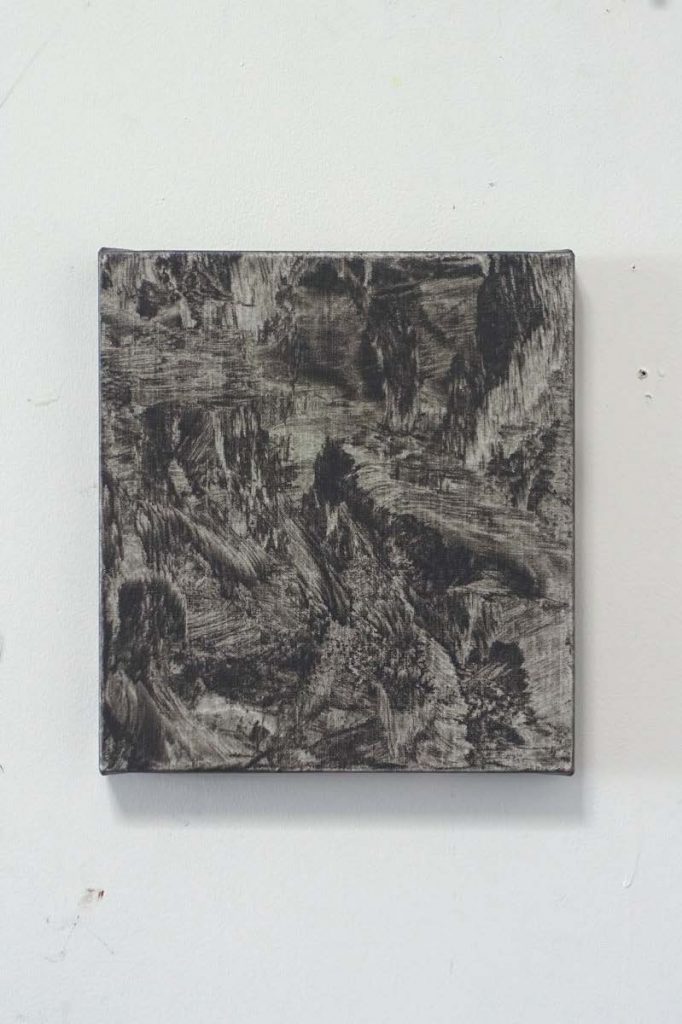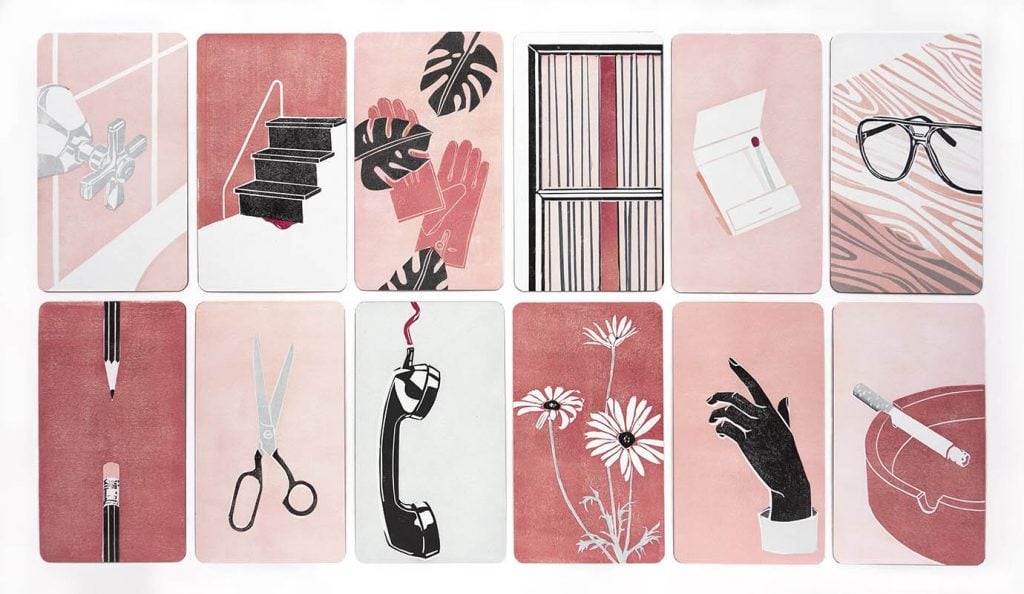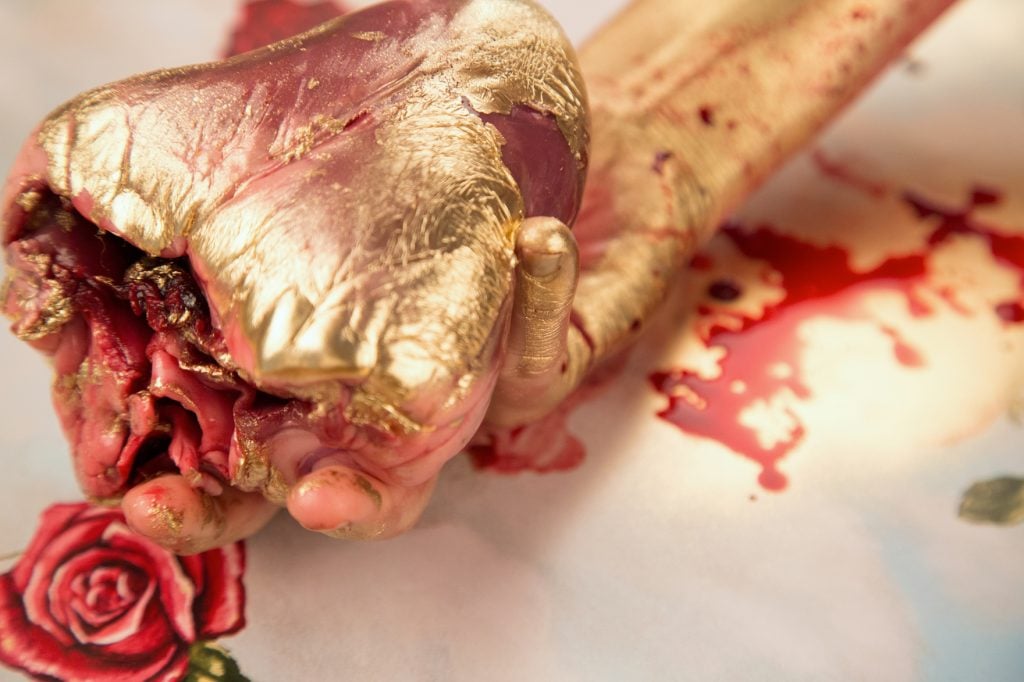Art Collectors
What I Buy and Why: Miami Collector Ellie Hayworth on Supporting Small Galleries and Fairs, and the ‘Gut-Punch’ Joy of Discovering New Artists
After seven years in New York, Hayworth recently returned to her native Miami.

After seven years in New York, Hayworth recently returned to her native Miami.

Sarah Cascone

When art consultant Ellie Hayworth went to ride out lockdown with her parents in Miami in March 2020, she had no way of knowing it would be the beginning of a new chapter in her life, personally and professionally.
Hayworth had spent the past two years nurturing her eponymous art consulting company (after previous stints with art world PR firms Resnicow and Associates and Third Eye), But after seven years in New York City, the Cuban-American Miami native suddenly found herself imagining a permanent relocation back to her hometown.
One day on a run through Coral Gables, she spotted a building still under construction, and then signed up for a virtual tour. Hayworth loved the unit’s private balcony, and the space was big enough to serve as both a home and office. She signed a lease, sight-unseen, and packed up her Brooklyn apartment for good.
Since moving back to Miami, she has evolved her company, Hayworth, from a one-woman arts PR show to an itinerant gallery for art and design that debuted during Miami Art Week with a booth at the Untitled Art Fair.
We spoke with Hayworth about how she started collecting art, and her passion for discovering emerging artists.

Jean-Baptiste Bernadet, Untitled (Black Painting 2528-15-01 – Torrit), 2015. Courtesy of the artist.
What was your first purchase?
As a graduate student at New York’s Sotheby’s Institute of Art, I was invited to volunteer at the Newd Art Fair in Bushwick. I was immediately taken by a small black-and-white painting by Jean-Baptiste Bernadet, whose work I had associated with large scale, impressionistic colors, and pointillist style. This small, monochromatic canvas was such a point of departure for him that I knew I couldn’t walk away. I went home with my first acquisition that day.
Not long after, I gained the confidence to go bigger: I acquired my first large-scale paintings—two works from a beautiful and atmospheric series of paintings by Benoit Platéus rendered on vintage French movie posters.

Benoit Platéus, L’Etincelle (2016). Courtesy of the artist and Signs and Symbols, New York.
What was your most recent purchase?
I was introduced to the work of artist Langdon Graves through Dinner Gallery at New York’s Future Fairs last year. I am fascinated by the precision with which Graves renders colloquial objects, imbuing them with a subtle, graceful lyricism. Dinner Gallery founder Celine Mo told me that Graves was developing a limited-edition tarot deck with unique symbols in a sort of contemporary dark romanticism style. As someone who turns to symbology and spirituality in many aspects of my life, this resonated deeply with me. This set of 12 cards is now among my most treasured acquisitions.

Langdon Graves, Home Circle – Mourning (2021). Courtesy of the artist and Dinner Gallery, New York.
Which works or artists are you hoping to add to your collection this year?
I have a number of works on my proverbial radar, but at the top of my “moonshot” wish list is a diptych on paper by SimonEvansTM. I’ve long admired their practice and am captivated by their approach to what I’ve coined conversationally “cultural cartography.”
What is the most expensive work of art that you own?
I rarely assess “value” in terms of price and often have an intrinsic pull toward works I regard to be meaningful and formative within the evolution of an artist’s career. I gravitate toward works by young, ascendant artists whose body of work reflects an intriguing, dynamic trajectory. I never collect work on the secondary market, for instance. It undercuts that gut-punch sense of discovery for me.
As such, the work that comes to mind is a large, masterful painting by Yulia Iosilzon entitled The Sweet Tooth, which is the centerpiece of my living space and one I regard to be a real gem!

Yulia Iosilzon, The Sweet Tooth (2019). Courtesy of the artist and Carvalho Park Gallery, Brooklyn.
Where do you buy art most frequently?
I tend to be a repeat collector from galleries with whom I’ve cultivated a friendship, beyond a professional relationship. Two New York galleries whose programming I admire and strive to support—Signs and Symbols and Carvalho Park—are distinct in approach and vision. Both harbor an architectural sensibility which mirrors my own love of design, and both are wholly committed to intellectual rigor.
Beyond keeping an eye on the exhibitions presented by galleries whose programming I admire, I’ve enjoyed acquiring works from art fairs over the years. As a graduate student, I began collecting work at the former NEWD Art Fair in Brooklyn and Pulse in Miami Beach. Today, I continue to hone this spontaneity by collecting from fairs like Future Fair and Untitled Miami Beach.

Ellie Hayworth in her Coral Gables, Florida, home office. Photo by Gesi Schilling.
Is there a work you regret purchasing?
Not in the least! Every work, no matter how large, small, quirky, or atypical has become a special component of my growing collection. The gallery wall in my home office is continually growing and evolving, as is a curiosity cabinet I’ve installed to display my object-based works. I don’t believe art needs to simply live on one’s walls or on a pedestal, though. I’ve collected small objects, hand-bound artist books, a turn-of-the-century child’s kimono, and even a palm-reading fortune conducted for me by an artist. These may all appear disparate when considered independently, but taken as a whole they are representative of my approach to holistic collecting and living with thought-provoking art and design.
What work do you have hanging in your bathroom?
I’ve hung a photograph titled Consumed Heart, fused in plexiglass by artist Suzy Kellems Dominik from her “Beatrice to Hell and Back” series, prominently in my master bathroom.

Suzy Kellems Dominik, Consumed Heart. Courtesy of the artist.
What is the most impractical work of art you own?
I collected a series of “books” by Vietnamese-American artist Trong Gia Nguyen from Montenegro’s Mc2 Gallery at Pulse in Miami many moons ago. The works are composed of small envelopes constructed from transparent plastic and screen printed to mimic library cards associated with each of the books. The artist has meticulously—and painstakingly—transcribed the books either in their entirety or in excerpts onto individual grains of rice with a magnification lens, a needle, and ink. I acquired Howl by Allen Ginsberg, The Tale of Peter Rabbit by Beatrix Potter, and Animal Farm by George Orwell. I’m very careful when transporting them so as to avoid losing even one grain of rice.

Trong Gia Nguyen, Animal Farm by George Orwell (2015) and The Tale of Peter Rabbit by Beatrix Potter (2015). Photo courtesy of the artist and MC2 gallery.
What work do you wish you had bought when you had the chance?
At an exhibition at the artist-run Greenpoint Terminal Gallery years ago, I saw a spectacular green and white Michael Assiff “painting” made of sculpted plastic featuring botanicals and tropical foliage—perhaps a nod to the contemporary misappreciation of nature and the rampant deforestation contributing to climate change. I remain a huge fan of his work.
If you could steal one work of art without getting caught, what would it be?
Gustav Klimt’s Portrait of Mäda Primavesi currently in the collection of the Metropolitan Museum of Art. She is so bold and precocious—I just adore her.
Hayworth will speak at Miami’s Code Art Fest, which aims to get young girls involved with digital art and technology, on March 12.